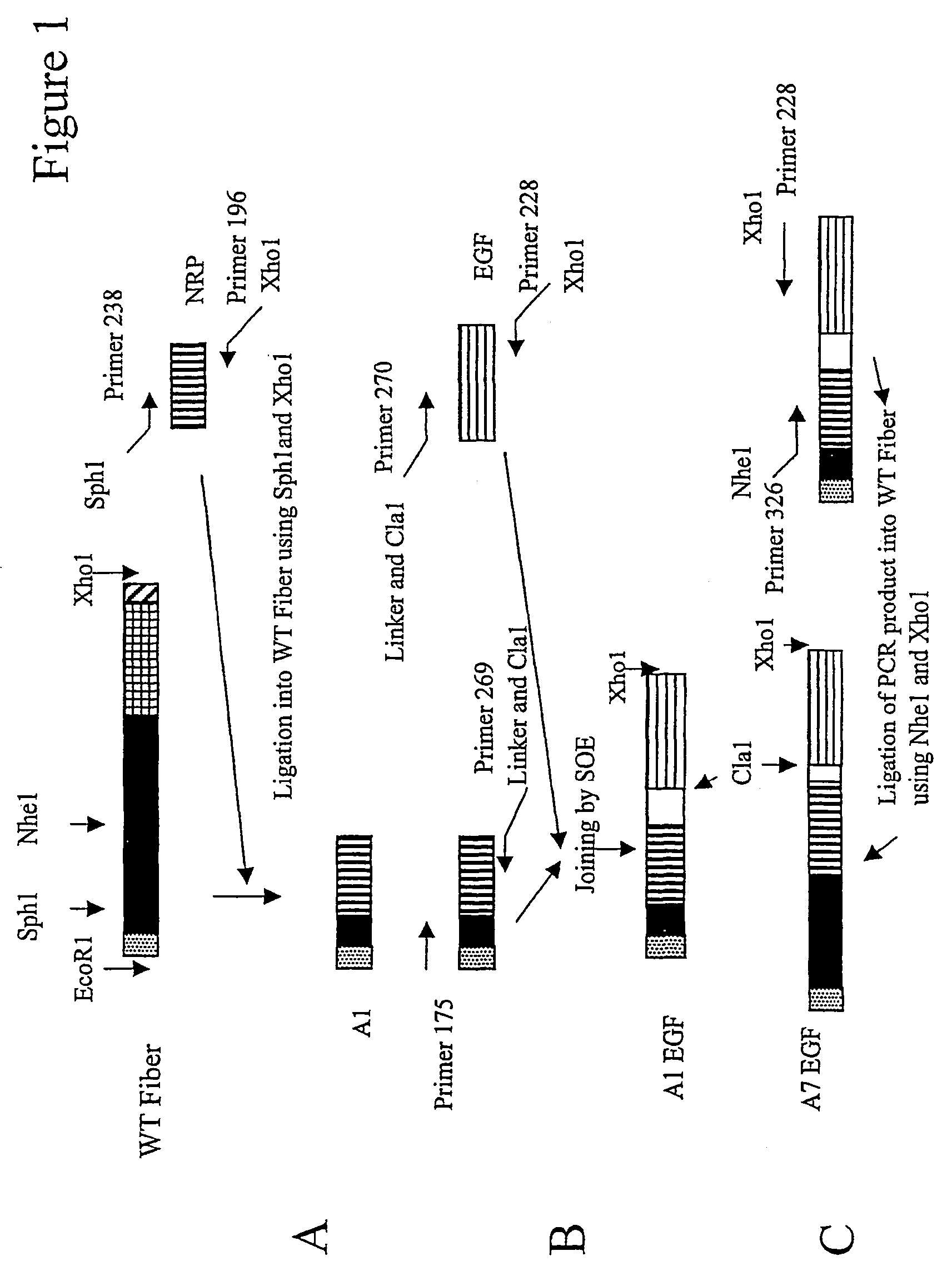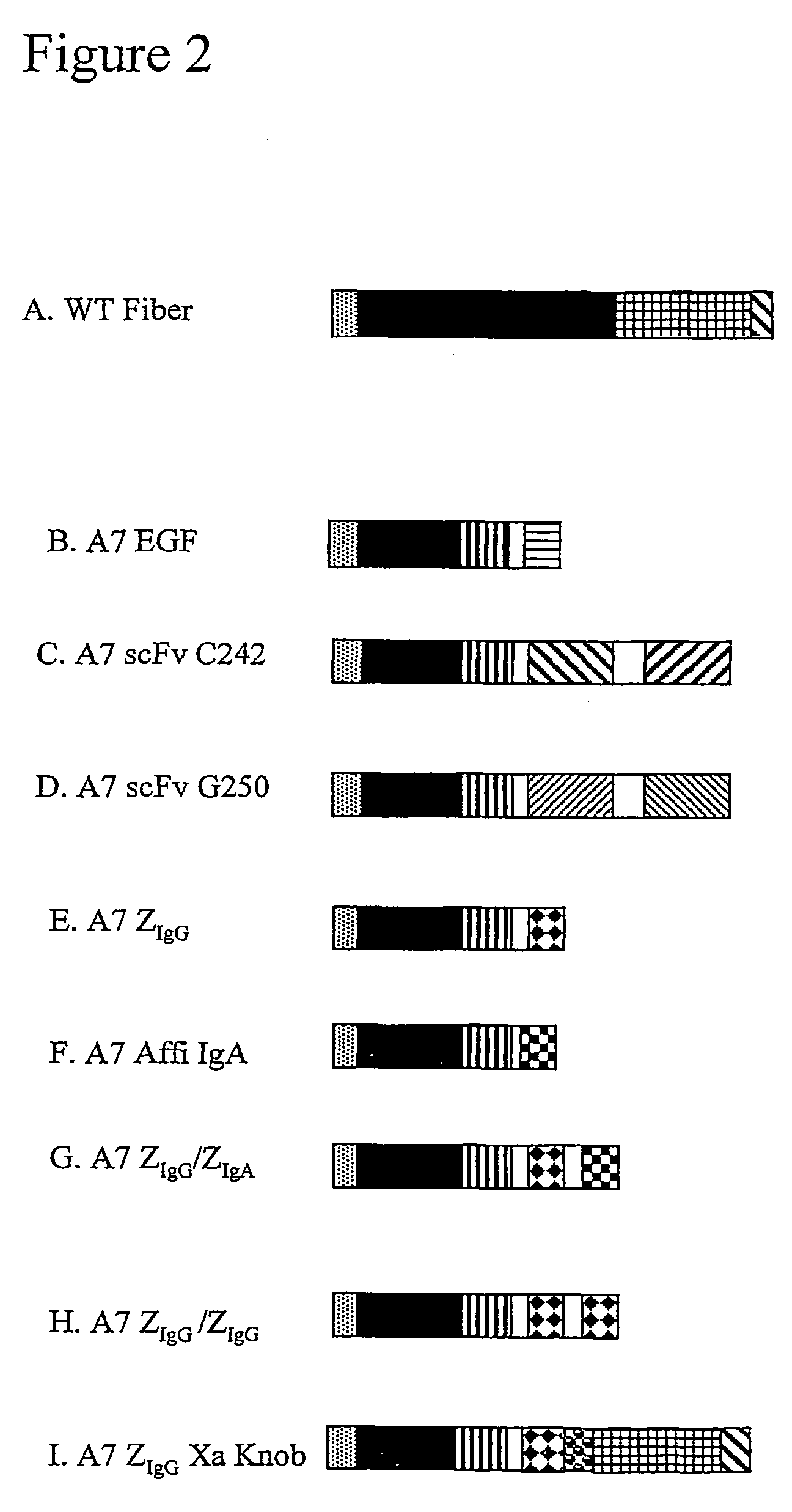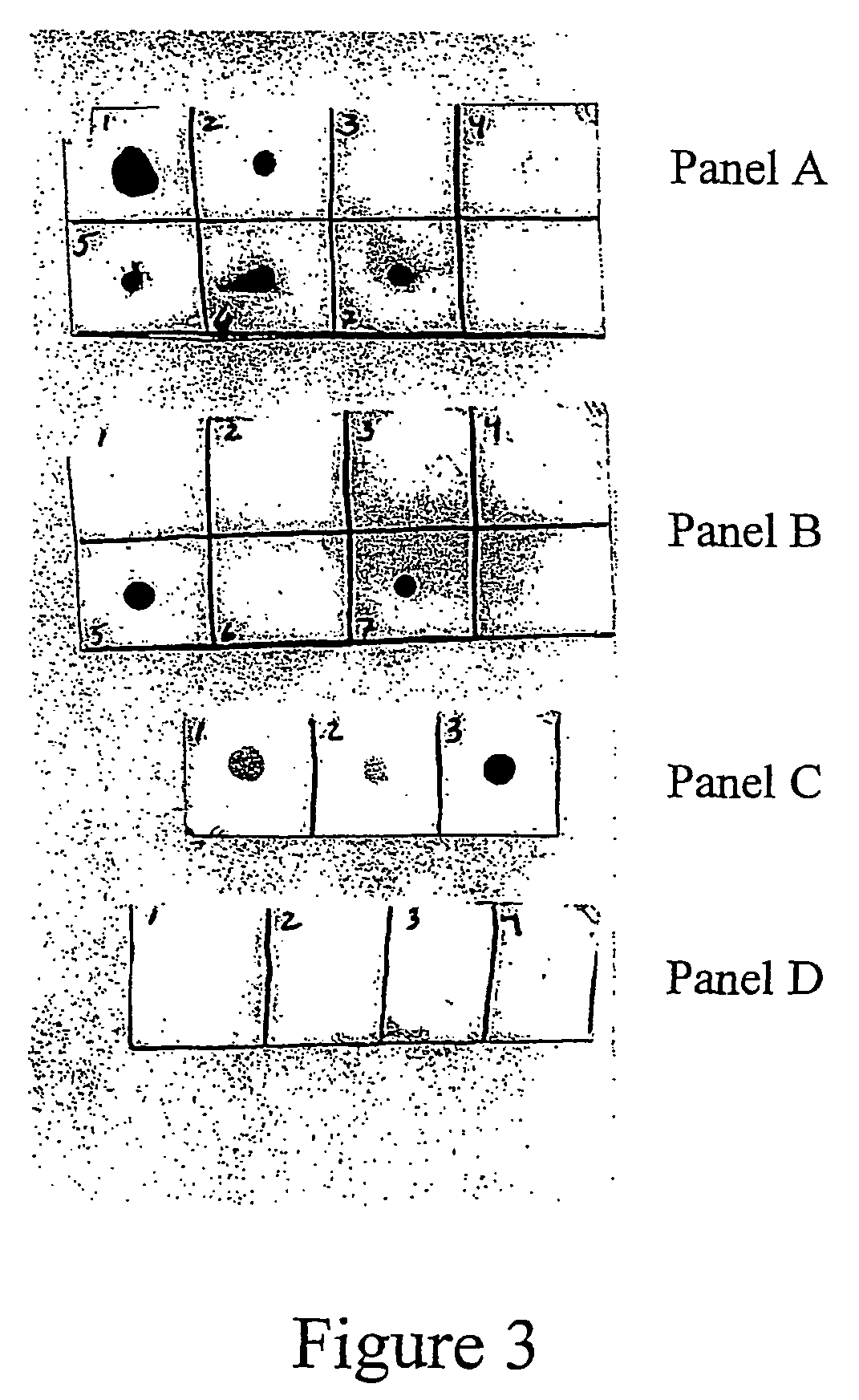Modified virus comprising one or more non-native polypeptides
a technology of modified viruses and polypeptides, which is applied in the field of new recombinant viruses, can solve the problems of limiting the potential safety of viral vectors, vectors have not been available in reliable form, and gene therapy is still not a useful method in human medicin
- Summary
- Abstract
- Description
- Claims
- Application Information
AI Technical Summary
Benefits of technology
Problems solved by technology
Method used
Image
Examples
example 1
Genetic Insertion of a Trimerisation Motif (the Neck Region Peptide from Human Lung Surfactant D) into Adenovirus Fibers
[0180]The gene encoding Ad 5 WT fiber was obtained from a preparation of Ad5 virus by PCR using an upstream primer (Primer 175) identical to the first six coding triplets of the fiber plus an EcoR1 site and a downstream primer (Primer 149) annealing to the six terminal coding triplets of the fiber plus an Xho1 site. The fiber thus obtained [SEQ. ID. NO.: 1] was cloned into the vector pBluescript using these restriction sites and can be further sub-cloned into other vectors using the same restriction enzymes.
[0181]Fiber peptides were made where the knob was replaced with an external trimerisation motif (see below). The purpose behind the introduction of an external trimerisation motif is two-fold: a) to remove the knob containing the native trimerisation signal but also the cell binding part of the fiber, and b) simultaneously to supply the necessary trimerisation s...
example 2
Assembly of Gene Construct Encoding Recombinant Adenovirus Fibers with Epidermal Growth Factor (EGF) and the External Trimerisation Motif from Human Lung Surfactant D
[0184]For a schematic representation of the constructions and construction pathways see FIGS. 1 and 2.
[0185]The DNA sequence for human EGF [SEQ. ID. NO.: 4] was synthesized, cloned and sequenced in the project. This sequence was then joined to the A1 fiber mentioned above by splicing by overlap extension. In this case the EGF gene was subjected to PCR with an upstream primer (270) (identical to the first seven coding triplets) and containing an overhang with the sequence for an amino acid linker [SEQ. ID. NO.: 5] derived from Staphylococcal protein A and a Cla1 restriction site, and a downstream primer (228) (complementary to the seven terminal triplets of the + strand and containing an Xho1 site). The A1 fiber gene was subjected to PCR with an upstream primer identical to the first six coding triplets of the gene and a...
example 3
Assembly of Gene Construct Encoding Recombinant Adenovirus Fibers with Single-chain Antibodies and the External Trimerisation Motif from Human Lung Surfactant D
[0187]Two monoclonal antibody single chain fragments were used to construct recombinant adenovirus fibers. The first is a single chain fragment (scFv) of the monoclonal antibody G250, which with high selectivity has been shown to react with a protein antigen on human renal carcinoma cells (Oosterwijk et al., Int. J. Cancer 38: 489-94, (1986)). The second is a single chain fragment of the monoclonal antibody C242 which reacts with i.a. colorectal and pancreatic carcinomas (Johansson C., Thesis, University of G{grave over ( )}teburg, (1991)).
G250 Constructs
[0188]The single chain fragment (Variable kappa chain or VK, linker, variable heavy chain or VH, joining sequence and constant heavy domain 2 or CH2) of the antibody G250 was constructed as previously described (Weijtens et al., J. Immunol., 152(2): 836-43, (1996)). This G250...
PUM
| Property | Measurement | Unit |
|---|---|---|
| Fraction | aaaaa | aaaaa |
| Structure | aaaaa | aaaaa |
| Solubility (mass) | aaaaa | aaaaa |
Abstract
Description
Claims
Application Information
 Login to View More
Login to View More - R&D
- Intellectual Property
- Life Sciences
- Materials
- Tech Scout
- Unparalleled Data Quality
- Higher Quality Content
- 60% Fewer Hallucinations
Browse by: Latest US Patents, China's latest patents, Technical Efficacy Thesaurus, Application Domain, Technology Topic, Popular Technical Reports.
© 2025 PatSnap. All rights reserved.Legal|Privacy policy|Modern Slavery Act Transparency Statement|Sitemap|About US| Contact US: help@patsnap.com



